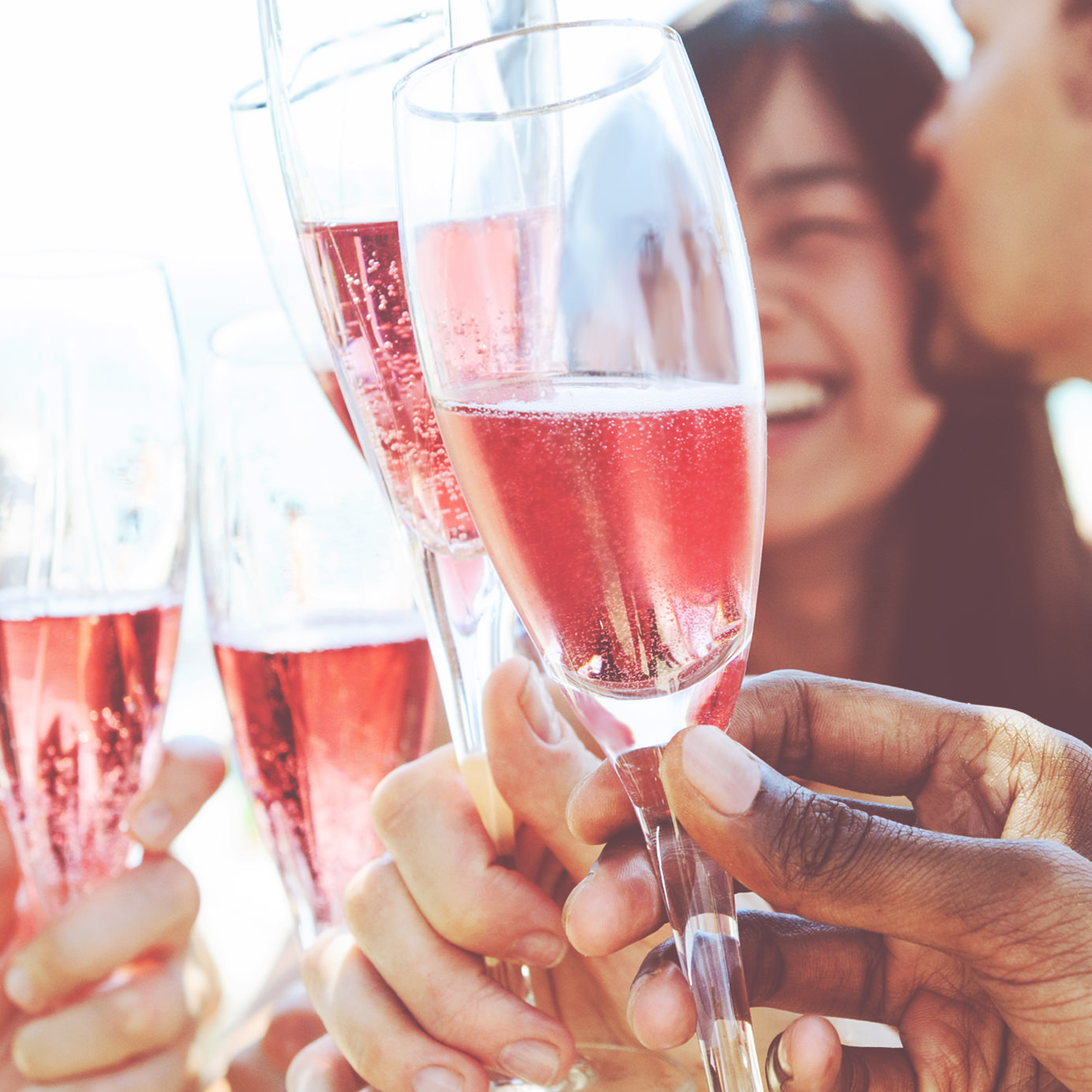We may fancy ourselves singular snowflakes, but patterns checker what we eat, drink, and hashtag. Thanks to the lightning-fast nature of digital sharing, trends like Negronis and so-called “unicorn foods” quickly escalate from local to global phenomena. Look around, and suddenly everyone (no seriously, everyone) is feting Persian New Year, drinking cortados, or collectively dropping $207 million on rosé (#allday).
Now rosé Champagne is very much on the rise. The concept is not new — Champagne Ruinart reportedly debuted pink bubbles in 1734 — but it marries two simultaneously surging categories: Consumers’ insatiable thirst for rosé wine meets sommeliers’ Champagne obsession.
“The CIVC (Comité Interprofessionnel du Vin de Champagne) shows that in 2015 rosé Champagne was 12% of the Champagne market,” Michelle DeFeo, Champagne Laurent-Perrier’s U.S. president, wrote in an email. “And since 2005, sales for the category have risen at a rate of 3.6% percent per year.” Laurent-Perrier’s Cuvée Rosé now comprises more than a quarter of the company’s overall sales.
“When it exceeds 5 or 6 percent of the market share, it’s no longer a trend,” Cyril Brun, cellar master for Charles Heidsieck, said of rosé Champagne in an August 2017 interview with VinePair.
https://www.instagram.com/p/BcC5HrVlP5-/?tagged=laurentperrier
At The Modern, a two-Michelin-star restaurant in NYC, Master Sommelier Michael Engelmann noted a 20 percent increase in rosé Champagne sales last year. He says the increase is “probably due to the popularity of rosé wines in general, and that Champagne continues to be a very popular choice.”
The category is also remarkably food-friendly. Rosé Champagne complements everything from fritters or spiced nuts to grilled shellfish and even roasted meats, according to a 2013 Food & Wine article titled, “Why Sparkling Rosé Pairs with Everything.”
“Sommeliers and wine professionals start pushing the limits of what people can pair food with and then a trend is born,” Ariel Arce, owner of Air’s Champagne Bar in NYC, says.
“I love rosé Champagne to start a meal, and it can work really well with various dishes,” Engelmann wrote in an email. “One of my favorite combinations is pairing rosé Champagne with a watermelon and caviar dish we had on the menu this summer. I’ve also recently paired an aged rosé Champagne with a pigeon dish, which worked stunningly together.”
https://www.instagram.com/p/BRW8V0ZFqqV/?hl=en&tagged=rosebubbles
The ascension of rosé Champagne is particularly noteworthy given its social, seasonal, and economic associations. For many Americans, rosé is a summertime drink, linked to Provençal picnics and Hamptons parties. Bubbles are generally thought to require dry-clean-only attire and/or a corporate account to foot the bill. As consumers become increasingly wine-savvy, and as more and better bottles are imported to the United States, these restrictions are loosening.
“I think the trend of rosé started as this summer water drink,” Arce says. Now, due to increased demand among increasingly educated wine consumers, “there are just so many more quality rosés and especially rosé Champagnes on the market,” she says. Rosé wine is increasingly popular year-round, and Champagne fills glasses on dates other than January 31 or February 14.
A 2015 survey of more than 1,000 wine consumers in all 50 states showed that Americans make wine purchases based on price, brand, and variety, in that order. Rosé Champagne isn’t cheap compared to, say, the $672 million juggernaut that is Barefoot, America’s top-selling wine brand. The word “rosé” is right there in the name, though, so those who consider themselves general-admission rosé drinkers are predisposed to give it a shot.
It’s also produced by a number of houses with widespread brand recognition. Moet & Chandon Imperial Rosé is sold at Target and other retailers from $57, and Laurent-Perrier’s Cuvée Rosé and Taittinger Brut Prestige Rosé can both be found online from $57 per bottle. Although pricier than these houses’ brut bottles (Tattinger Brut La Francaise retails for $44.99, for example), thanks to the growing popularity of pink wine, rosé Champagne is not necessarily competing with traditional Champagne. It’s a standalone category.
“Now we observe that many makers have developed a range of rosé Champagne within an existing range of older Champagne,” Brun said. “Rosé Champagne is trying to answer a trend.”
https://www.instagram.com/p/BXxzf3ODLme/?tagged=pinkbubbly
Unlike rainbow bagels or bacon-flavored everything, rosé Champagne isn’t a temporary fad destined to flash and burn among digital influencers and the people who hate-follow them. It’s storied, skillfully made, and straight-up qualified to successfully overcome such obstacles as price, seasonality, and even gendered associations with the color pink.
“It’s kind of the best long con,” Arce says, “because you give someone the taste of the good stuff, and they’re never going to want to go back … When you start opening up the whole world of rosé, let alone sparkling rosé, let alone rosé Champagne, it’s a massive category.”
As such, rosé Champagne is less likely to eclipse traditional Champagne in the U.S. than to grow in tandem alongside it. CIDC reports that 16.9 million bottles of Champagne were shipped to America in 2010, 2.43 million of which were rosé. By 2015, those numbers grew to 20.5 million and nearly 3 million, respectively. As wine consumption and spending continue to grow, particularly among millennials, both traditional and rosé Champagne show no signs of deceleration.
“We have more access to more wine than ever before, and there’s just nothing stopping it,” Arce says. Don’t adjust your filters; this pattern is built to last.
